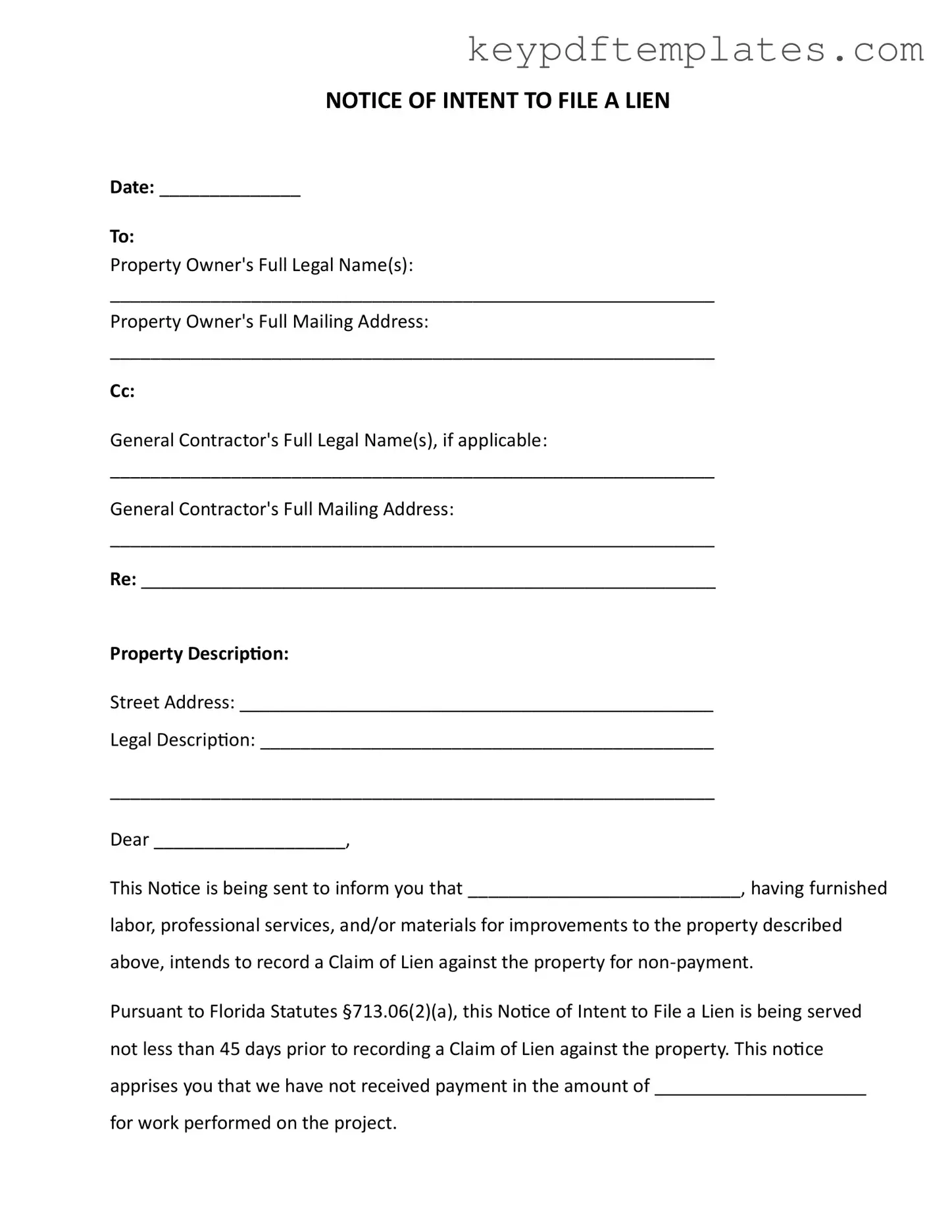Get Intent To Lien Florida Form
The Intent To Lien Florida form is a legal document that notifies property owners of an impending claim against their property due to non-payment for services rendered. This notice serves as a warning, allowing property owners to address outstanding payments before a lien is officially filed. Understanding this form is crucial for both contractors and property owners to navigate potential financial disputes effectively.
Modify Document Online
